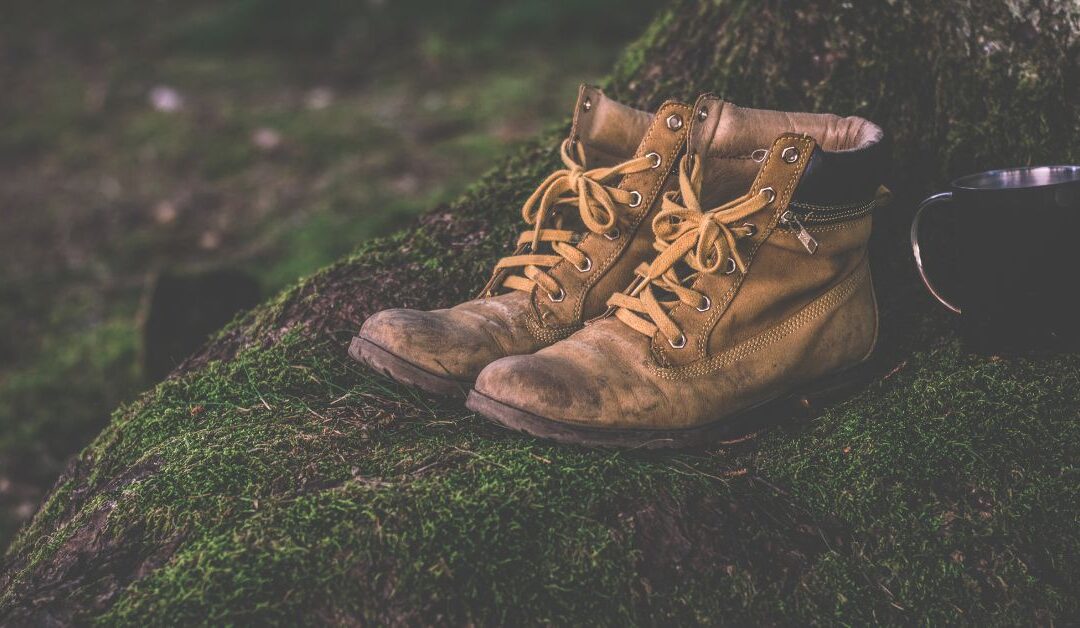Ask any seasoned hiker or climber—good outdoor footwear is the foundation of every successful adventure. Your boots are more than just protection for your feet; they determine your pace, balance, and endurance. The wrong pair can cause blisters, fatigue, or even force you to cut a trip short.
In this guide, we’ll explore how to choose the perfect footwear for hiking, climbing, or camping trips. You’ll learn how terrain, material, and fit impact performance—and how to match your boots with your clothing & outerwear, backpacks & bags, and overall camping equipment setup.
Why Your Footwear Matters More Than You Think
Your feet carry you over every mile, climb, and slope. Quality outdoor footwear prevents injuries, enhances traction, and supports your body under heavy loads. For climbers, that could mean stability on rocky ledges; for campers and RV travelers, it might mean comfort during long walks and uneven trails around camp.
Choosing the right pair is about aligning your boots with your activity level and environment—not just the look or brand name.
Step 1: Understand the Types of Outdoor Footwear
Hiking Shoes
Lightweight, breathable, and flexible—ideal for day hikes, well-maintained trails, or summer outings. They pair perfectly with minimalist backpacks & bags and ultralight camping equipment.
Best for: Short hikes, easy trails, and RV camping trips.
Mid-Cut Hiking Boots
These provide more ankle support and protection from debris while staying light enough for moderate treks. A great middle ground for backpackers carrying 20–30 lbs.
Best for: Multi-day trips with moderate loads and uneven terrain.
Mountaineering & High-Cut Boots
Built for rugged ascents, snow, and cold weather. They often feature waterproof membranes, stiff soles, and crampon compatibility. When paired with technical clothing & outerwear, these boots offer unmatched warmth and protection.
Best for: Alpine climbs, snowy trails, and extended expeditions.
Camp & Recovery Footwear
After a long day on the trail, switching into breathable sandals or camp shoes lets your feet recover. They’re lightweight, compact, and fit easily in your backpacks & bags.
Best for: Evenings at Basecamp, around the RV, or riverside cooking sessions with your camp kitchen gear.
Step 2: Know Your Terrain
Rocky & Mountain Terrain
Look for sturdy soles with deep lugs and rock plates. Stiffer midsoles help protect your feet from sharp edges and provide stability under heavy shelter & sleeping gear loads.
Muddy or Wet Trails
Waterproof membranes like Gore-Tex or eVent keep your feet dry, while quick-dry uppers prevent soggy discomfort. Combine these boots with moisture-wicking socks and clothing & outerwear layers for the best results.
Desert & Dry Environments
Breathability becomes the top priority. Lightweight mesh boots or trail shoes keep airflow high and reduce sweat buildup.
Snow & Cold Climates
Insulated, waterproof boots are essential. Combine with gaiters and thermal socks for full-weather protection.
Step 3: Fit and Comfort Are Everything
A perfect boot should feel snug around the heel but allow toe movement. Poor fit leads to blisters, pressure points, and joint fatigue.
Fitting Checklist:
- Try boots with the same socks you plan to hike in.
- Leave a thumb’s width between your longest toe and the boot front.
- Test them on an incline—your toes shouldn’t hit the front when descending.
- Break them in before long expeditions.
Pair your boots with a supportive insole and proper backpacks & bags to balance weight evenly across your frame.
Step 4: Care and Maintenance
Even the best outdoor footwear needs regular upkeep.
- Clean after every trip: Remove dirt, rinse soles, and dry naturally—avoid direct heat.
- Re-waterproof periodically: Use sprays or wax to maintain moisture resistance.
- Inspect tread wear: Replace boots once the grip fades or midsoles compress.
- Store properly: Keep them in a cool, dry area with good ventilation.
Maintaining your boots ensures long-term performance and safety on every trail.
Step 5: Integrate Footwear with the Rest of Your Gear
Your footwear works in harmony with everything else you carry:
- Clothing & Outerwear: Pair boots with weather-appropriate socks and breathable layers.
- Backpacks & Bags: Adjust your pack’s hip belt and straps for even weight distribution.
- Navigation & Survival Tools: Securely store maps or GPS devices for route-planning during breaks.
- Cooking & Camp Kitchen Gear: Wear comfortable camp shoes while cooking or resting.
- Shelter & Sleeping Gear: Keep a dry pair of socks inside your sleeping bag for overnight warmth.
Quick Tips for Buying Outdoor Footwear
- Match your footwear to your trip type—not the other way around.
- Don’t sacrifice comfort for weight savings. Slightly heavier boots with proper support prevent injuries.
- Rotate pairs if you hike frequently; alternating boots extends their lifespan.
- Test on varied terrain—carpets won’t tell you how a boot performs on rock.
- Buy quality, not quantity. Reliable gear lasts for years and supports your adventures.
Your boots are your connection to every mountain, valley, and forest you explore. The right outdoor footwear provides comfort, traction, and confidence—no matter the terrain or weather.
When paired with reliable camping equipment, supportive backpacks & bags, and smart clothing & outerwear, great footwear turns every hike or climb into a smooth, enjoyable experience.
Explore our full selection of durable, high-performance hiking and mountaineering boots at ExplorePeakOutdoorGear.com/shop and step confidently into your next adventure.

